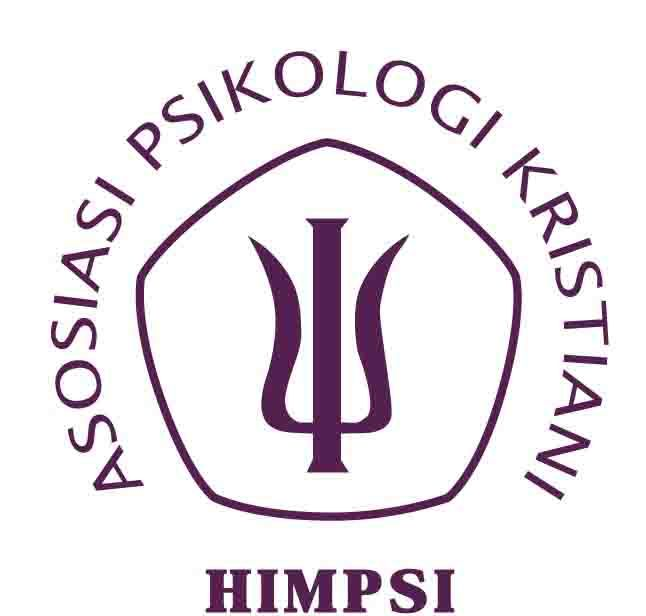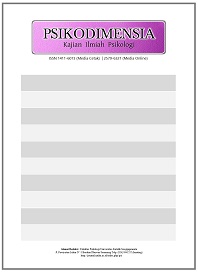The Use of Gagne’s Model in Introducing Geometric Shapes to Intellectual Disability Children with Hearing Loss
Abstract
Intellectual disability children with hearing loss, due to limitations in intellectual and hearing functions, had difficulty understanding geometric shapes. Therefore, an effective learning model was needed to teach these concepts. This study aimed to introduce geometric shapes (circles, squares, and triangles) to intellectual disability children with hearing loss. The hypothesis proposed was that using Gagne’s model would affect the ability to recognize geometric shapes, specifically circles, squares, and triangles, in intellectual disability children with hearing loss. This study was a single-subject research study with an A-B-A design. The measuring instrument used in this study was a checklist method filled in by the researcher. The participant was a 5-year-11-month-old girl diagnosed with mild intellectual disability and hearing loss, who attended an inclusive playgroup. The research procedure lasted for 21 sessions, consisting of three baseline sessions, 15 intervention sessions, and three maintenance sessions. The data analysis technique in this study used descriptive techniques from graphs. The results of this study indicated that Gagne’s model method was effective in introducing geometric shapes. Based on these results, the hypothesis was accepted, indicating that using Gagne’s model influenced the ability of intellectual disability children with hearing loss to recognize geometric shapes. The implication of this study was that Gagne’s model could be applied to intellectual disability children with hearing loss to teach geometric shapes effectively.
Keywords
Full Text:
PDFReferences
Alfikri, F., Khodijah, N., & Suryana, E. (2022). Analisis Kebijakan Pendidikan Inklusi. Syntax Literate: Jurnal Ilmiah Indonesia, 7(6). https://doi.org/doi.org/10.36418/syntax-literate.v7i6.7545
Angelka, K., & Goran, A. (2018). Learning Problems in Children with Mild Intellectual Disability. (IJCRSEE) International Journal of Cognitive Research in Science, Engineering and Education, 6(1), 31–37. https://doi.org/10.5937/ijcrsee1801031K
APA. (2022). Diagnostic and Statistical Manual of Mental Disorders, Fifth Edition, Text Revision (DSM-5-TRTM). American Psychiatric Association Publishing.
Bergstrom, C., & Zhang, D. (2016). Geometry interventions for K-12 students with and without disabilities: A research synthesis. International Journal of Educational Research, 80(2015), 134–154. https://doi.org/10.1016/j.ijer.2016.04.004
Bhaumik, S., & Alexander, R. (2020). Oxford Textbook of the Psychiatry of Intellectual Disability. In Oxford Textbook of the Psychiatry of Intellectual Disability. Oxford University Press.
Bouck, E. C., & Satsangi, R. (2015). Is There Really a Difference? Distinguishing Mild Intellectual Disability from Similar Disability Categories. Education and Training in Autism and Developmental Disabilities, 50(2), 186–198.
Clements, D. H., Sarama, J., & Joswick, C. (2022). Learning and Teaching Geometry in Early Childhood. In Special Issues in Early Childhood Mathematics Education Research (pp. 95–131). Brill. https://doi.org/doi.org/10.1163/9789004510685_005
Curry, J. H., Johnson, S., & Peacock, R. (2021). Robert Gagné and the systematic design of instruction. In Design for Learning: Principles, Processes, and Praxis (1st ed., pp. 1–12). EdTech Books.
Daleon, J. D. (2023). Exploring the challenges and application of Gagne’s nine events of instruction in the flexible program: A Phenomenological study of technical-vocational-livelihood (TVL) students’ experiences. Sci. Int.(Lahore), 35(3), 321–326.
Demir, Ü. (2022). An Examination of the Impact of Game-Based Geometric Shapes Education Software Usage on the Education of Students With Intellectual Disabilities. ECNU Review of Education, 5(4), 761–783. https://doi.org/10.1177/2096531120940721
Friend, M. (2018). Special Education: Contemporary Perspectives For School Professionals (5th ed., Issue July). Pearson.
Gagné, R. M., Wager, W. W., Golas, K., & Keller, J. M. (2004). Principles of Instructional Design (4th ed.). Harcourt Brace College Publishers.
Gagné, Robert M., Wagner, W. W., Golas, K. C., & Keller, J. M. (2005). Principles of Instructional Design (5th ed.). Thomson Learning.
Haqiqy, M. S. I. Al, Huda, N., Halifah, N., & Haqiqy, M. S. Al. (2024). Listening Learning Design by Using Gagne’s Nine Instructional Events to Trigger Student Learning Communication. Asalibuna, 8(01), 1–14. https://doi.org/10.30762/asalibuna.v8i01.2682
Heward, W. L., Alber-Morgan, S. R., & Konrad, M. (2017). Exceptional Children: An Introduction to Special Education (11th ed.). Pearson Education.
Hord, C., Dejarnette, A. F., Mcmillan, L. A., & Baldrick, P. (2020). A student with mild intellectual disability and two-step equations. Support for Learning, 35(4), 506–521. https://doi.org/10.1111/1467-9604.12330
Jaiswal, P. (2019). Using learner-centered instructional approach to foster students’ performances. Theory and Practice in Language Studies, 9(9), 1074–1080. https://doi.org/10.17507/tpls.0909.02
Khadjooi, K., Rostami, K., & Ishaq, S. (2011). How to use Gagne’s model of instructional design in teaching psychomotor skills. 4(March), 116–119.
Kocaöz, O. E., & Yalçın, G. (2022). The effectiveness of Gagne’s model in concept teaching for a student with intellectual disability. Journal of Pedagogical Research, 6(4), 101–110. https://doi.org/10.33902/jpr.202216895
Kohzaki, H. (2023). Infectious Diseases Education Based on Gagne’s Nine Events of Instruction. The 1st International Conference on ICT Application Research, 12–17.
Kohzaki, H. (2024). Effects of Gagne’s Nine Events of Instruction and online classes about Infectious Diseases Education. International Journal of ICT Application Research, 1(1), 1–6.
Laja, Y. P. W., Simarmata, J. E., & Mone, F. (2021). Proses Berpikir Siswa Tunagrahita Ringan Dalam Memahami Konsep Geometri Berdasarkan Teori Jean Piaget. AKSIOMA: Jurnal Program Studi Pendidikan Matematika, 10(4), 2417. https://doi.org/10.24127/ajpm.v10i4.4180
Musa, G., Ibrahim, S. A., & Ahmad, I. M. (2024). Effects of Gagne’s Nine Events of Instruction on Biology Students Academic Performance in Tarauni, Kano State. Ilorin Journal of Education (IJE), 44(2), 92–105.
Of, I., Retardation, M., & Learning, C. (n.d.). Pelaksanaan pembelajaran anak tunagrahita. 387–396.
Orbe, M. C. A. (2019). Module development for a social science course: An application of Gagne’s Nine Events in Instruction Module development for a social science course : An application of Gagne’s Nine Events in Instruction. Maritime Academy of Asia and the Pacific Kayama Point, 0, 1–12.
Orihuela, S. M., Collins, B. C., Spriggs, A. D., & Kleinert, H. (2019). An Instructional Package for Teaching Geometric Shapes to Elementary Students with Moderate Intellectual Disability. Journal of Behavioral Education, 28(2), 169–186. https://doi.org/10.1007/s10864-018-09314-5
Özmen, R. G., & Ünal, H. (2008). Comparing the Effectiveness and Efficiency of Two Methods of Teaching Geometric Shape Concepts to Students with Mental Retardation. Educational Sciences: Theory and Practic, 8(2), 669–680.
Pandey, S. (2020). Implementing Gagne’s Events of Instruction in MBA Classroom: Reflections and Reporting. International Journal of Management Research and Social Science, 7(3), 56–61. https://doi.org/10.30726/ijmrss/v7.i3.2020.73011
Patel, D. R., Apple, R., Kanungo, S., & Akkal, A. (2018). Intellectual disability: Definitions, evaluation and principles of treatment. Pediatric Medicine, 1(December 2018). https://doi.org/10.21037/pm.2018.12.02
Patel, D. R., Cabral, M. D., Ho, A., & Merrick, J. (2020). A clinical primer on intellectual disability. Translational Pediatrics, 9, S23–S35. https://doi.org/10.21037/TP.2020.02.02
Pradhitya, R. F., Yunianta, T. N. H., & Ratu, N. (2017). Profil Berpikir Geometri Siswa Tunagrahita berdasarkan Tingkatan. Kreano, Jurnal Matematika Kreatif-Inovatif, 8(1), 85–93.
Qutieshat, A. (2018). Using Gagne’s Theory and Peyton’s Four-Step Approach to Teach Inferior Alveolar Nerve Block Injection. Journal of Dental Research and Review, 5(3), 76–79. https://doi.org/10.4103/jdrr.jdrr_42_18
Ramopoly, I. H., & Bua, D. T. (2022). Analisis Kesulitan Guru dalam Mengajar Anak Berkebutuhan Khusus (Tunagrahita) Di SLB Dharma Wanita Makale. Elementary Journal : Jurnal Pendidikan Guru Sekolah Dasar, 4(2), 87–97. https://doi.org/10.47178/elementary.v4i2.1452
Rini, M., Setiawan, W., & Rusnayanti, H. (2015). Development of Educational Game by Incorporating Gagne’s Nine Events of Instruction. Proceeding International Seminar on Mathematics, Science and Computer Science Education, 957–962.
Sari, F., & Anam, K. (2022). Implementation Of Gagne’s Nine Events On Islamic Education Subjects At Sdn Tamansari 03 Wuluhan Jember. Journal of Scientific Research, Education, and Technology (JSRET), 1(2), 109–118. https://doi.org/10.58526/jsret.v1i2.19
Sunanto, J., Takeuchi, K., & Nakata, H. (2005). Pengantar Penelitian Dengan Subjek Tunggal. In Cricet: University of Tsukuba. CRICED University of Tsukuba.
Uğraş, G., Uzun, A. M., Battal, A., & Kayaduman, H. (2016). An Examination of Instructional High School Chemistry Videos on EBA Portal in terms of Nine Events of Instruction. Participatory Educational Research (PER), 3(1), 66–78. https://doi.org/10.17275/per.16.04.3.1
Yulinda, D., Yundayani, A., & Juhana, J. (2024). Student’s Perspective on the Implementation of Gagne’s Nine Instructional Events in Collaborative Project-Based English Language Teaching. Lectura : Jurnal Pendidikan, 15(1), 64–82. https://doi.org/10.31849/lectura.v15i1.17249
Yunaini, N., & Arnidha, Y. (2022). Pengaruh Pembelajaran Berbasis Teori Van Hiele Terhadap Pemahaman Bangun Ruang Kubus Geometri Siswa Tunagrahita. Journal Of Elementary School Education (JOuESE), 2(2), 128–134. https://ejournal.umpri.ac.id/index.php/JGP/article/view/1774
Zulfah, S. A., & Mukhoiyaroh, M. (2022). Penerapan Teori Pemrosesan Informasi Robert M. Gagne pada Pembelajaran Pendidikan Agama Islam di SDI Al-Mubarok Surabaya. Edudeena : Journal of Islamic Religious Education, 6(2), 144–157. https://doi.org/10.30762/ed.v6i2.498
DOI: https://doi.org/10.24167/psidim.v23i2.13046
Print ISSN : 1411-6073 | online ISSN : 2579-6321 View My Stats

This work is licensed under a Creative Commons Attribution 4.0 International License.




















